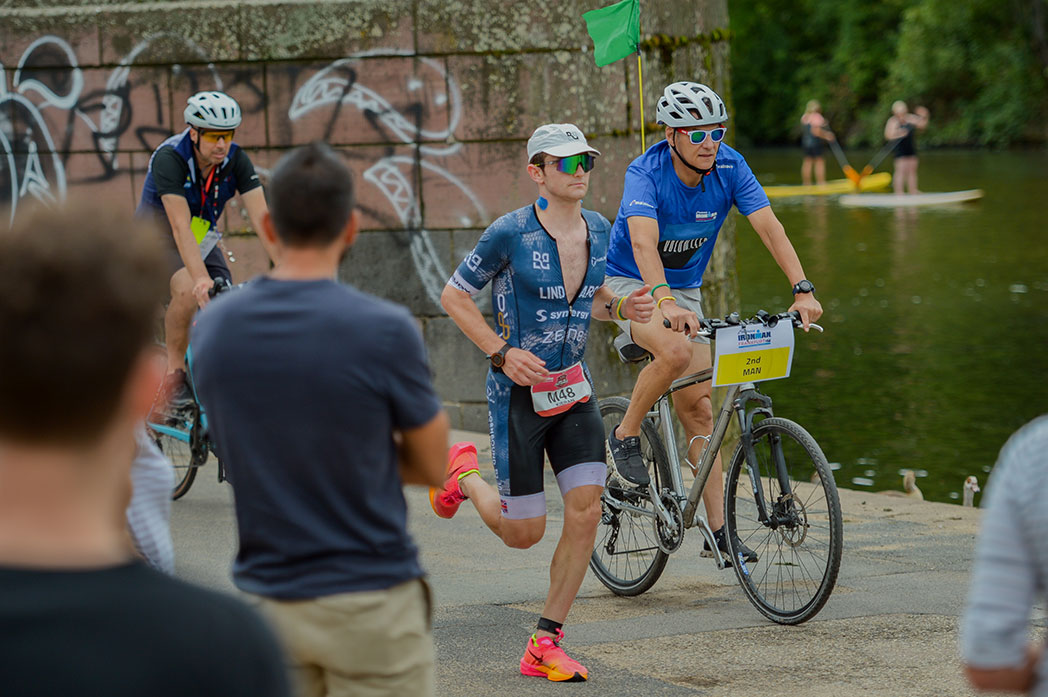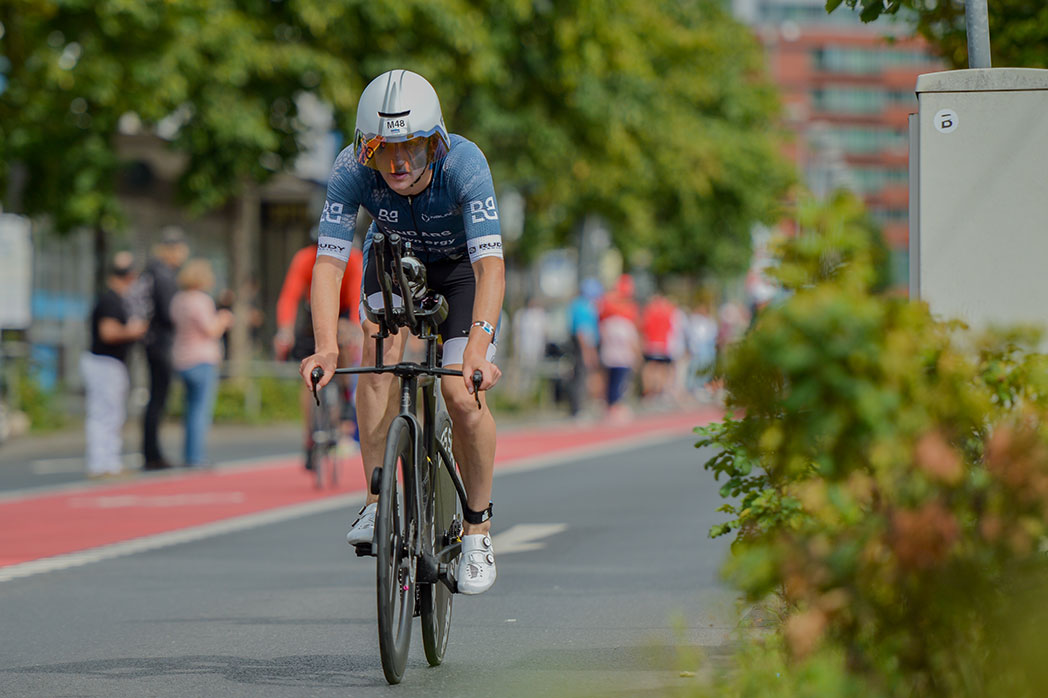
Advice for Your First Ironman: Essential Tips for Training, Gear and Race Day
Signing up for your first Ironman isn’t just about doing a race. It’s about committing to months of preparation, reshaping your daily routine, and figuring out how to handle long training days without burning out. Yeah, it’s a lot of work. But it’s also doable and incredibly rewarding.
Whether you’re still deciding if you want to go through with it or you’ve already hit “register,” there are a few things that can make the road ahead smoother. This guide’s here to help, from training to gear to getting through the big day with your head on straight. Following structured training plans specifically designed for Ironman races is key to building the endurance and skills needed for this unique challenge.
Training for Your First Ironman
Getting ready for an Ironman means organising your life around something that’s going to demand a lot of time and energy. It’s not just about being fit. It’s about consistency, patience, and keeping your head on straight through the grind. Ironman training requires a significant training time commitment, and balancing the three disciplines—swimming, cycling, and running—along with recovery is essential.
Managing Your Time
At peak training, you’ll be logging around 15 to 20 hours a week. That includes swim, bike, run, strength work, and recovery. If you’ve got a full plate already with work, family, life then you’ll need a plan that doesn’t break everything else. Many athletes need to balance training time with other commitments, so your training plans should be realistic for your current fitness level to avoid burnout and injury.
Build a schedule that fits your lifestyle and try to stick to it. A steady rhythm is more helpful than overloading one week and missing the next. It’s not very glamorous, but it works.
Setting Goals That Work
The best way to stay motivated over months of training is to have clear, realistic goals. Think about where you are now, and build in stepping stones. Maybe that’s finishing a shorter race first or building up your long rides a little at a time. Many triathletes use shorter races, like a first triathlon or half ironman, as stepping stones to gradually build up to an ironman distance.
Don’t get obsessed with speed, that can come later. For now, just getting to the finish line is a huge win. It’ll stick with you long after the race is over. For first timers, finishing your first time ironman is an achievement in itself.
Should You Get a Coach?
If you’re unsure about how to train, working with a coach can help. They’ll set up a plan that matches your current fitness and your schedule, keep you on track, and adjust things when life gets in the way. A coach can help you develop a structured training plan and pacing plan tailored to your needs, ensuring you build up safely and effectively.
Look for someone who knows what it’s like to train for an Ironman. Talk to a few different coaches, not just one. What matters isn’t just their background. It’s whether their style matches how you like to train and communicate.
Gear You Actually Need
Next, let’s talk gear. There’s a mountain of gear out there, and it’s easy to fall into the trap of thinking you need the latest version of everything. You don’t. But you do need reliable equipment that fits you and performs well under long hours of use.
The Basics
First focus on the basics. You’ll need a wetsuit, goggles, and a swim cap for the swim. For the bike, a dependable road bike is a great choice for first timers, and getting a professional bike fit is crucial for comfort and performance. Don’t forget a jersey for the cycling segment, helmet, and clip-in shoes. For the run, comfortable shoes, lightweight clothing, and something to hold your fuel.
A tri-suit makes transitions smoother, and a race belt or hydration setup can make fuelling much easier. Make sure you’ve trained in all of it before race day. Surprises aren’t fun mid-race. The three disciplines of triathlon—swimming, cycling, and running—each require the right gear to ensure you’re prepared for every part of the event.
Spending Where It Counts
Don’t blow your budget on top-end tech unless you’ve already nailed the basics. A mid-level bike that fits well will take you much further than an expensive setup that doesn’t suit your body. The same goes for running shoes—comfort and function matter most. Prioritise the right gear for the three sports, but don’t overspend before you know what works for you.
Here’s a rough idea of what you might spend and where to prioritize:
Recommended Gear Budget
| Item | Budget Range | Priority |
|---|---|---|
| Bike | £1,500–£15,000 | High |
| Running Shoes | £80–£300 | High |
| Tri Suit | £100–£600 | Medium |
| Wetsuit | £200–£800 | Low |
Start simple. Upgrade when you know what matters to you. Put your money into what’ll make the most difference in comfort and reliability.
Keep It in Working Order
Make sure you regularly maintain your bikes to ensure everything is in working order. Clean your chain. Check your tyres. Wash your wetsuit. Rotate your running shoes and replace them after 400–500 miles. A mechanical issue on race day is usually avoidable. It’s boring stuff, but skipping it can ruin your day. Maintaining your bike and gear is critical for the entire race, especially on challenging courses.
Building a Smart Training Plan
A solid training plan doesn’t need to be fancy—it just needs to fit your life, push you gradually, and include enough recovery that you’re not constantly fried. Ironman training requires a gradual build up in volume and intensity, and incorporating brick workouts (bike and run) and swim to bike sessions is essential for adapting to race conditions.
Start with where you are and add volume slowly. Most training blocks include a base phase (long, steady efforts), a build phase (add some intensity), and a peak phase (get race-ready).
Strength training and mobility often get ignored—but they matter. You don’t need a hardcore gym plan, but a little goes a long way. Remember, recovery time is just as important as training, helping you become a stronger triathlete and avoid overtraining.
Don’t Forget Recovery
Rest is not a luxury, it’s part of the training. Take one full day off each week, and plan lower-intensity recovery weeks every month or so. Many athletes underestimate the value of recovery time, but it’s essential for preventing injury and ensuring long-term progress.
Aim for quality sleep and stay on top of hydration and nutrition. If you’re tired, scale back. Pushing through fatigue every time isn’t a flex—it’s a shortcut to burnout.
Training Smarter, Not Just Longer
Structured workouts can make a big difference. Swim drills, bike intervals, brick sessions (bike-to-run), and paced long runs all help you prepare for what the race will actually feel like. Structured training, guided by a comprehensive guide or athlete guide, can help you prepare for the event and make sure you’re covering all the bases.
Apps and plans are useful, but the best programs are the ones tailored to you. That’s where a coach, or at least a well-thought-out plan, really comes in handy.
What to Do on Race Day
Race day is where everything comes together. It’s also where everything can fall apart if you don’t manage your pacing, your nerves, and your fuelling. Reviewing the athlete guide and triathlon checklist during your pre-race routine ensures you have everything ready for the transition area and your transition bag or transition bags.
Stick to the Plan
Start the swim relaxed. Don’t burn out early trying to fight the current or the crowd. On the bike, watch your heart rate or power and fuel regularly. The run is about patience. Start slower than you think you should and take it aid station by aid station. Knowing the course, bike course, and locations of aid stations is crucial, and having a good pacing plan is key for the second half of the race when fatigue sets in.
Don’t let the excitement at the start mess with your pacing. Arriving at the start line prepared is essential for a successful race.
Get Your Head in the Right Place
Feeling anxious is normal but being prepared helps. Know your transition setup, your gear, your nutrition, and your pacing. Walk yourself through race day mentally before it happens. The mental game is just as important as physical preparation so focus on your own race instead of other athletes to conserve energy and stay on track.
When nerves show up, and they will, breathe. Stick to what you’ve practiced. You’ve done the work so now it’s time to let it show.
Fuel Like You Mean It
Start fuelling early and stick to what worked during training. Nothing new on race day. Everyone’s numbers are different, but a general starting point is 90–120 grams of carbs per hour on the bike and 60 per hour on the run, with around 500–1000ml of fluids and electrolytes per hour. Ironman nutrition should include a mix of solid foods, sport drinks, and a tested nutrition plan to keep you going for the entire race.
Practice eating during long workouts. If your stomach rebels, adjust. Getting this wrong can wreck your race, so treat it like another part of training.
Why Community and Coaching Can Help
Having a coach, a training partner, or a group you can check in with can help more than you think. It will keep you accountable, give you people to learn from, and provide support when training gets tough. Connecting with other athletes and many triathletes can help you learn from their ironman journey and racing experiences, making your own preparation more effective.
Even an online forum can make a difference. Race day feels less intimidating when you see familiar faces.
The Finish Line Is Just the Start
Your first Ironman isn’t just about the day itself—it’s about everything that got you there. You’ll spend months preparing, questioning whether it’s worth it, and figuring out how to make it all fit. And then one day, you’ll toe the line and realise you’re ready. Completing your first ironman triathlon or iron distance triathlon is a milestone event, and the best advice is to enjoy the process and not compare yourself to other athletes.
If you’re thinking about doing it, do it. You don’t need to feel 100% ready. You just need to be willing to start. Train with purpose, be patient with yourself, and enjoy the process when you can. Crossing that finish line changes how you see yourself and that sticks long after the race is over.


